Click image for BBB rating
See our Privacy Policy
cool="cool" width="787" height="6615" border="0" cellpadding="0" cellspacing="0" gridx="16" showgridx="showgridx" usegridx="usegridx" gridy="16" showgridy="showgridy" usegridy="usegridy" bgcolor="#99ccff">
|
|
|
 |
|
|
|
|
|
|
Welcome to Spaightwood Galleries, Inc.
120 Main Street, Upton MA 01568-6193
You can follow us on Facebook at http://www.facebook.com/pages/Spaightwood-Galleries-Inc/122951564441757
I blog there regularly and announce special events and special sales.
Home / Gallery Tour 1 / Specials / Gallery Tour 2 / Artists
Gallery News
Otto Dix (German, 1891-1969): The Gospel of St. Matthew II
|
|
|
|
|
|
|
Otto Dix was born in Untermhaus, near the city of Gera. The eldest son of an iron foundry worker, like Kollwitz he was exposed to art from an early age; his mother had written poetry in her youth, and he had a cousin who was a painter. In 1910, he entered the Dresden School of Arts and Crafts and supported himself as a portrait painter. As Reinheld Heller observes in his article on Dix in The Grove Dictionary of Art (9: 41-43), Dix combined "a verisitic style derived from Nothern Renaissance prototypes. . . . [with a] randomly colored Expressionism" (9: 41), using thin glazes of oil paint over a tempera underpainting. When the First World War began, Dix volunteered for the German Army and was assigned to a field artillery regiment. By the fall of 1915 he was a non-commissioned officer of a machine-gun unit in the Western front and took part of the Battle of the Somme. He was seriously wounded several times. In 1917, his unit was transferred to the Eastern front until the end of hostilities with Russia. Back in the western front, he fought in the German Spring offensive. He earned the Iron Cross (second class) and reached the rank of vice-sergeant-major. Dix was profoundly affected by the sights of the war, and would later describe a recurring nightmare in which he crawled through destroyed houses. For Dix, "War was something so animal like: hunger, lice, slime, these crazy sounds . . . War was something horrible, but nonethless something powerful . . . Under no circumstances could I miss it! It is necessary to see people in this unchained condition in order to know something about man" (9: 41). He represented his traumatic experiences in many subsequent works, including one of his graphic masterpieces, a portfolio of fifty etchings called Der Krieg / The War, published in 1924.
At the end of 1918 Dix returned to Gera, but the next year he moved to Dresden, where he studied at the Akademie der Bildende Künste. In 1919 he became a founder of the Dresdener Sezession Gruppe, which Heller describes as "a group of radical Expressionist and Dada artists and writers." In 1920 he met George Grosz and, influenced by Dada, began incorporating collage elements into his works, some of which he exhibited in the first Dada Fair in Berlin. He also participated in the German Expressionists exhibition in Darmstadt that year; in 1924 he joined the Berlin Secession. His 1923 painting The Trench, which depicted dismembered and decomposed bodies of soldiers after a battle caused such a furor that the Wallraf-Richartz Museum hid the painting behind a curtain. In 1925 the then-mayor of Cologne, Konrad Adenauer (later to become Chancellor of Germany from 1949-1963), cancelled the purchase of the painting and forced the director of the museum to resign.
By the Neue Sachlichkeit (New Objectivity) exhibition in Mannheim in 1925, which featured works by George Grosz, Max Beckmann, Heinrich Maria Davringhausen, Karl Hubbuch, Rudolf Schlichter, Georg Scholz and many others, Dix was recognized as one of its leading painters: five of his paintings were included and, according to Frances Carey and Antony Griffiths, The Print in Germany 1880-1933: The Age of Expressionism (London: British Museum, 1984), Dix emerged as the dominant personality, among figures like Grosz, Schlichter, and Hubbuch (p. 183). Dix's work, like that of Grosz, was extremely critical of contemporary German society and often dwelled on the act of Lustmord, or sexual murder. He drew attention to the bleaker side of life, unsparingly depicting prostitution, violence, old age and death. His depictions of the legless and disfigured veterans that were a common sight on Berlin's streets in the 1920s clearly illustrate their forgotten status, a fate echoed in the drawings, paintings, and prints of many French and German artists, including Jean-Louis Forain and Heinrich Campendonck. Linda McGreevy has argued that the personal experiences of the artists who survived the war years almost compelled them to find styles that would permit them to express their struggles with their memories: "Propelled by memories of events so shattering . . . an imagery emerged not 'in tranquility,' as described by Wordsworth [in his 1798 Preface to The Lryical Ballads], but in a heated re-creation of the war's immediacy," and invited the invention of "a documentary style, its heightened realism fused with the emotional charge generated by prewar Expressionism" (p. 3).
When the Nazis came to power in Germany in 1933, Dix was dismissed from his teaching position at the Düsseldorf Akademie and in 1934 he was forbidden to exhibit his work publiscly. In 1937, 260 of his works were confiscated; some were included in the infamous Entartete Kunst / Degenerate Art exhibition in Munich and two of his works were publicly burnt in 1939 for attempting "to undermine the German people's attempt to defend itself." In 1937, Dix moved to Hemmenhofen on Lake Constance where he painted The Seven Deadly Sins, depicting Hitler as Envy. Dix was forced to join the Nazi-controlled Imperial chamber of Fine Arts in order to be able to work as an artist at all and had to promise to paint only landscapes. In 1939 he was arrested on a charge of being involved in a plot against Hitler (see Georg Elser) but was later released. During World War II Dix was conscripted into the Volkssturm. He was captured by French troops at the end of the war and released in February 1946. Dix eventually returned to Dresden.
After the war most of his paintings were religious allegories or depictions of post-war suffering. His major works as a printmaker mirror the two parts of his career. The etchings of Der Krieg (1924), published in five portfolios of 10 prints each, stand with Goya's Disasters of War and the works of the "Guerre / War" section of Rouault's Miserere, as one of the supreme presentations of the horrors and suffering of war as seen by eye witnesses unable to shake the memories from their mind's eye; his 33 original lithographs for Das Evangelium nach Matthäus, a deluxe edition of the Gospel According to St. Matthew published in 1960, can be compared with Dürer's Small Woodcut Passion and Rouault's Miserere taken as a whole. Using the Gospel story as a model for interpreting events, they contextualize the present day's horrors against the meaning provided by the whole of the story of which they are a part. While they lack the searing intensity of the etchings for Der Krieg, they provide a deeply moving testament to the biblical story of how a state or a church can turn upon itself and destroy those who embody its best hopes.
Bibliography: Eva Karcher, Otto Dix 1891-1969: His Life and Works (Cologne: Benedikt Taschen, 1988; Florian Karsch, Otto Dix: Das graphische Werk (Hannover: Fackelträger-Verlag Schmidt-Kuster, 1970); Fritz Loffler, Otto Dix: Graphik aus fünf Jarhzehnten (Leipzig: Insel-Verlag, 1978); Fritz Loffler, Otto Dix: Life and Work Trans R. J. Hollingdale (NY: Holmes & Meier, 1982); Bertrand Lorquin et al., Allemagne, Les Années Noires (Paris: Gallimard, 2007); Linda F. McGreevy, Bitter Witness: Otto Dix and the Great War (NY: Peter Lang, 2001); Reiner E. Moritz, Otto Dix: The Painter is the Eyes of the World (Poorhouse Productions, 1989); Olaf Peters, ed., Otto Dix (NY: Prestel, 2010); Uwe M. Schneede, Otto Dix: Zeichnungen, Aqarelle, Grafiken, Kartons (Hamburg: Kunstverein in Hamburg, 1977).
|
|
|
|
|
|
|
|
|
|
 |
|
Die Tochter des Jairus (Auferweckung) / Jesus caling back Tabitha from death (Karsch 245). Original lithograph, 1960. 2000 impressions published in Das Evangelium nach Matthäus. Image size: 290x227mm. Price: Please call or email for current pricing information.
|
|
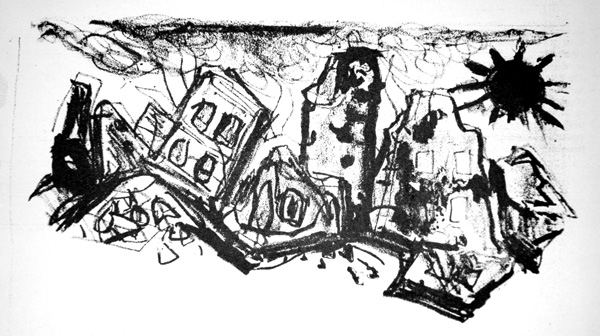 |
|
|
|
Die Weherufe ¨ber unbussfertige Städte / The Judgment to Come (Karsch 247). Original lithograph, 1960. 2000 impressions published in Das Evangelium nach Matthäus. Image size: 115x211mm. Price: Please call or email for current pricing information.
|
|
|
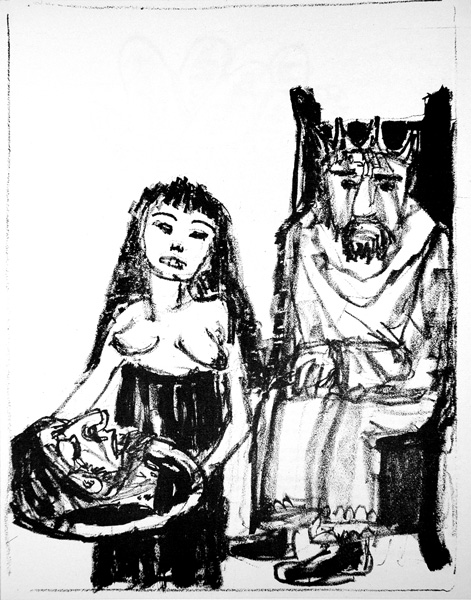 |
|
|
|
Dea Ende des Johannes des Täufers / Salome showing herod the Head of John the Baptist (Karsch 249). Original lithograph, 1960. 2000 impressions published in Das Evangelium nach Matthäus. Image size: 287x220mm. Price: Please call or email for current pricing information.
|
|
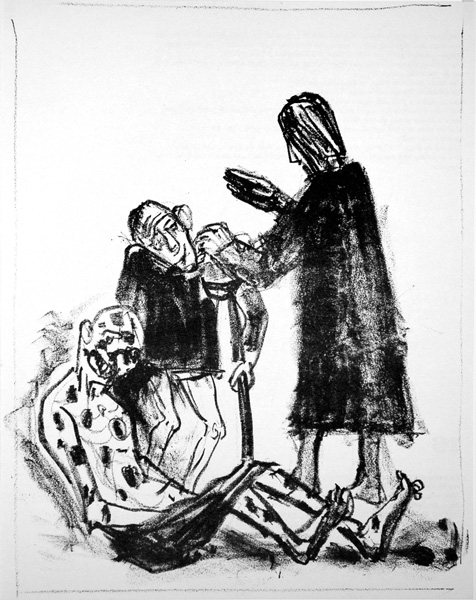 |
|
|
Die Heilung vieler Kranker / Jesus healing the sick (Karsch 251). Original lithograph, 1960. 2000 impressions published in Das Evangelium nach Matthäus. Image size: 285x226mm. Price: Please call or email for current pricing information.
|
|
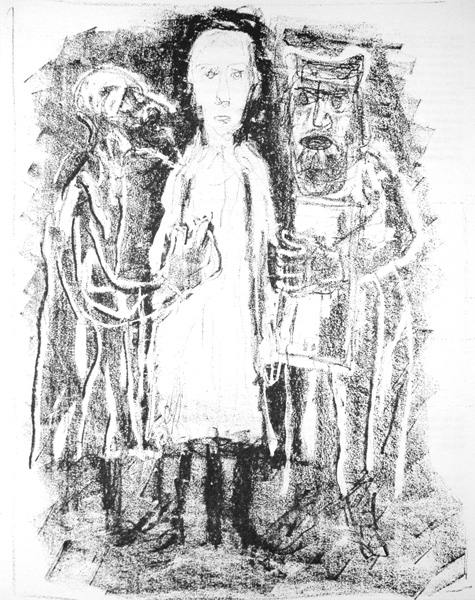 |
|
|
|
Verklärung Jesu / The Transfiguration (Karsch 251). Original lithograph, 1960. 2000 impressions published in Das Evangelium nach Matthäus. Peter, John, and James have accompanied Jesus up to the top of a mountain, where the three disciples promptly fall asleep, awaking to see Jesus, Elijah on his right and Moses on his left, all three glowing with light. Image size: 290x220mm. Price: Please call or email for current pricing information.
|
|
 |
|
|
|
|
Der Stater im Fischmaul / St. Peter getting the money to pay the Roman tax from the mouth of a fish (Karsch 253). Original lithograph, 1960. 2000 impressions published in Das Evangelium nach Matthäus. Image size: 107x220mm. Price: Please call or email for current pricing information.
|
|
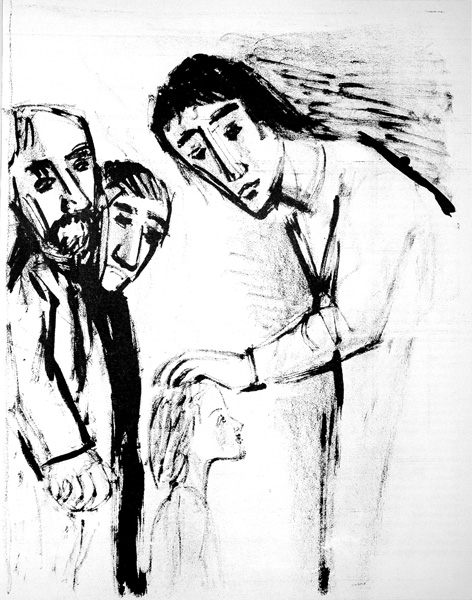 |
|
|
Deer Grösste im Himmelreich / Jesus welcoming the children into the Kingdom of Heaven (Karsch 254). Original lithograph, 1960. 2000 impressions published in Das Evangelium nach Matthäus. Image size: 293x220mm. Price: Please call or email for current pricing information.
|
|
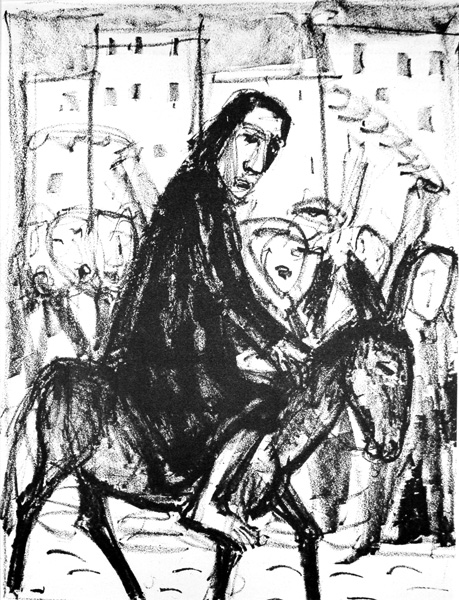 |
|
|
|
Einzug in Jerusalem / Chrits entering Jerusalem on Palm Sunday (Karsch 255). Original lithograph, 1960. 2000 impressions published in Das Evangelium nach Matthäus. Image size: 285x226mm. Price: Please call or email for current pricing information.
|
|
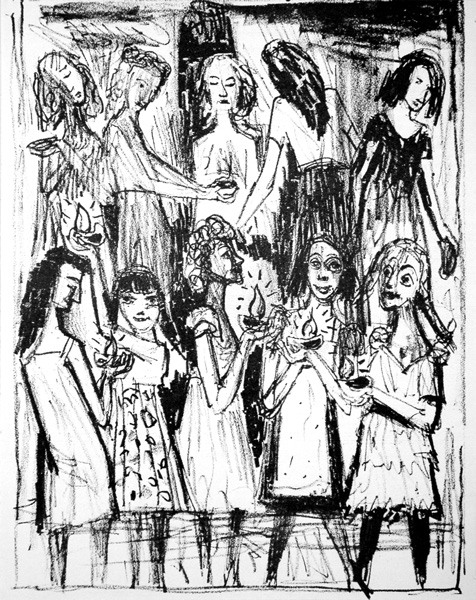 |
|
|
Die klugen und die törichten Jungfrauen / The parable of the wise and the foolish virgins (Karsch 256). Original lithograph, 1960. 2000 impressions published in Das Evangelium nach Matthäus. Dix depicts the wise virgins as young girls, two of whom are still in pigtails, while the foolish virgins are shown as well-dressed and sophisticated fashionable women. Image size: 295x220mm. Price: Please call or email for current pricing information.
|
|
Spaightwood Galleries, Inc.
To purchase, call us at 1-800-809-3343 (1-508-529-2511 in Upton MA & vicinity) or send an email to spaightwood@gmail.com.
We accept AmericanExpress, DiscoverCard, MasterCard, and Visa.
We also accept wire transfers and paypal.
For directions and visiting information, please call. We are, of course, always available over the web and by telephone (see above for contact information). Click the following for links to past shows and artists. For a visual tour of the gallery, please click here. For information about Andy Weiner and Sonja Hansard-Weiner, please click here. For a list of special offers currently available, see Specials.
All works are sold with an unconditional guarantee of authenticity (as described in our website listing
Go back to the top of this page.
Visiting hours: Saturday 10:00 am to 5:00 pm and Sunday noon to 6:00 pm and other times by arrangement.
Please call to confirm your visit. Browsers and guests are welcome.
|
|
|
|
|
|
|
|
|
|
|
|
|
|
|
|
|
|
|
|
|
|
|
|
|
|
|
|
|
|
|
|
|








